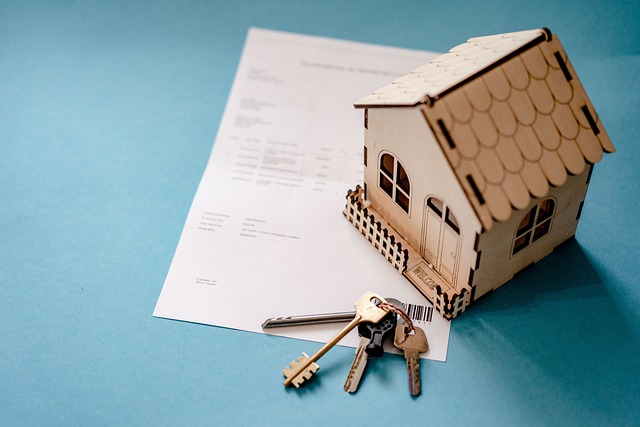What Determines Home Value: Factors & Market Trends
Home value shapes buying, selling, and investment choices. This guide breaks down the key drivers of property value — from market forces and appraisals to homeowner upgrades and modern trends like remote work and shifting demand. Learn how appraisals, CMAs, AVMs, and targeted improvements affect property value so you can make smarter real estate decisions.

Home value is more than a price tag; it reflects a mix of local market conditions, physical attributes, economic forces, and buyer preferences. Whether you own, plan to buy, or invest, understanding the components that shape a propertys worth helps you choose the right upgrades, set realistic expectations, and time transactions for the best results.
How does the real estate market affect home values?
Local supply and demand are the most immediate drivers of home prices. When inventories are low and buyer interest is high, competition pushes prices upward; when listings pile up and buyers are scarce, values tend to level off or fall. Broader economic indicators also matter: employment growth, wage trends, and consumer confidence influence how many people can and will buy homes. Interest rates are particularly powerful — lower mortgage rates increase purchasing power and often stimulate price growth, while higher rates can cool demand.
Market preferences and demographic shifts steer demand across neighborhoods. For example, a surge in interest for suburban space or proximity to transit can lift values in some areas while reducing demand in others. Local development, school quality, and neighborhood amenities further concentrate value, making micro-markets within cities and regions behave very differently.
What role do appraisals play in determining home value?
An appraisal is a professional estimate of a propertys market value and is usually required by lenders during a sale or refinance. Appraisers evaluate the homes condition, quality of construction, recent comparable sales (comps), location factors, and prevailing market trends. Their job is to provide an unbiased valuation that protects lenders from lending more than a property is worth.
Appraisals influence loan approval and down payment calculations, but they are not the only measure of value. Sales prices reflect what buyers are willing to pay at a moment in time, which might exceed or fall below an appraisal. Likewise, appraisals can lag in rapidly changing markets or be limited by availability of true comparables.
Can homeowners influence their property’s value?
Yes. Homeowners can take actions that preserve or increase value, but not every improvement guarantees return on investment. Regular maintenance — fixing leaks, updating electrical or HVAC systems, and keeping exteriors in good repair — prevents value erosion. Cosmetic updates like fresh paint, new flooring, and updated fixtures often improve perceived value at relatively low cost.
Strategic renovations matter: kitchen and bathroom updates typically offer strong resale appeal, while structural work (roof replacement, foundation repair) protects core value. Energy-efficiency upgrades, such as better insulation, high-efficiency windows, or solar panels, make homes more attractive and can reduce operating costs, which buyers increasingly value. Landscaping and curb appeal influence first impressions and can make properties sell faster and at better prices.
Be mindful of over-improving: upgrades that far exceed neighborhood norms may not yield proportional returns. Research typical values in your area and consult local agents before committing to expensive projects.
How do real estate professionals assess home value?
Agents and appraisers use several tools to estimate value. A comparative market analysis (CMA) compares recent sales of similar nearby properties and adjusts for differences to suggest a listing price. Appraisers follow standardized methodologies and weigh comps, replacement cost, and income potential when applicable.
Automated valuation models (AVMs) use large datasets and algorithms to produce quick value estimates online. AVMs can be useful for initial research but often miss property-specific nuances like recent upgrades, unique layouts, or deferred maintenance. For the most accurate assessment, combine AVMs with a CMA or a professional appraisal and on-the-ground market knowledge.
| Upgrade | Estimated Cost | Typical ROI |
|---|---|---|
| Minor kitchen refresh | $5,000–$15,000 | 60–80% |
| Full kitchen remodel | $20,000–$60,000 | 50–75% |
| Bathroom update | $8,000–$25,000 | 60–70% |
| Energy upgrades (insulation, windows) | $3,000–$20,000 | 40–70% |
| Landscaping / curb appeal | $2,000–$10,000 | 100%+ (varies) |
| Fresh paint and flooring | $2,000–$15,000 | 70–120% |
Cost disclaimer: Estimates are for informational purposes only and will vary by location, scope, and market conditions.
What are the current trends affecting home values?
Recent years have brought notable shifts. Remote work expanded the areas buyers consider, increasing demand for homes with office space and larger lots. This migration changed price dynamics, often raising values in suburban and rural markets while moderating demand in some urban cores. Low interest rates in many markets have historically fueled competition and price gains; rising rates or economic slowdowns can reverse that momentum.
Construction costs and supply-chain disruptions affect new-build affordability and the pace of inventory growth, which in turn impacts existing-home prices. Demographic trends, including aging populations and shifting household formation patterns, also influence what types of housing are most sought after. Short-term rental platforms and investor activity can create localized price pressure in popular vacation markets.
Putting it together: practical advice
Home value is governed by a mix of market forces and property-specific qualities. For sellers, knowing local comps, timing the market, and investing in high-impact, neighborhood-appropriate upgrades improves outcomes. Buyers should evaluate long-term trends, factor in interest rates, and get a professional appraisal or inspection to avoid surprises. Investors and homeowners alike benefit from tracking local economic indicators, inventory levels, and buyer preferences.
Staying informed, consulting local real estate professionals, and weighing the costs and likely returns of improvements will help you make smarter decisions about buying, selling, or enhancing a property as market conditions evolve.






